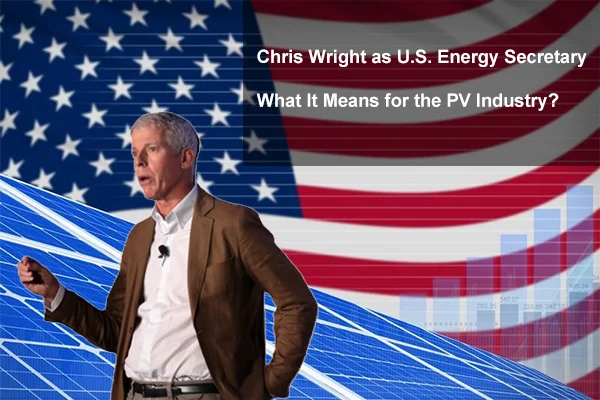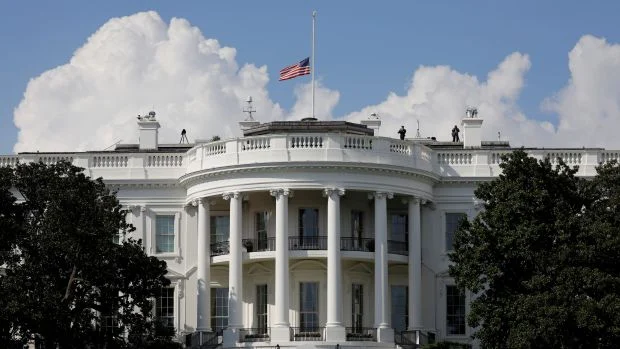The nomination of Chris Wright, a dedicated supporter of traditional sources of energy, to the position of US Energy Secretary has created quite a stir in the global energy sector, especially in the PV industry. An outspoken supporter of fossil fuels and an outspoken critic of renewable energy subsidies, his appointment marks a potential shift in US energy policy that is likely to hit at the very core of the solar industry.
Who is Chris Wright?

Chris Wright is an MIT mechanical engineering graduate, with his upbringing in the oil and gas business. Former CEO of Liberty Energy, he contributed much in championing shale and became perhaps the most vociferous advocate for the U.S. fossil fuel sector.
Wright has indeed looked skeptically at rapid energy transitions; he once called a proposal to phase out fossil fuels in one decade "unrealistic". He has also questioned the actual environmental effects of solar and wind energy, saying they are "not pure clean energy".
Implications for U.S. Solar Policy
A Shift Toward Traditional Energy
An appointment for Wright could signal a departure from renewables toward more fossil-fuel favorites. Wright supports the energy policy of former President Trump in:
- Backing coal, oil, and natural gas
- Easing restrictions on the extraction of shale gas
- Assailing subsidies for renewables, specifically solar and wind
The implications for the PV industry might mean the reduction of solar federal incentives such as tax credits or direct subsidies. Such a shift would constitute an increase in the financial burden for developers and would impede new solar construction.
Tariffs and Trade Policies
Given Wright's past actions to seek out protective measures, such as Section 201 tariffs on imported solar cells and solar panels, it may be an indication that such policies will continue or even increase. While these tariffs protect U.S.-based manufacturers, they have also increased the cost of solar projects and hurt demand.
Thought-Provoking Question: Could increased tariffs on solar imports inadvertently push the industry toward greater domestic production, or will it stifle growth altogether?
Potential Challenges for the PV Industry
Reduced Federal Investment
The Inflation Reduction Act (IRA) may now be revamped under Wright's leadership, having introduced rather generous incentives for the domestic renewable energy manufacturing sector. The proposed changes might do the following:
- Decrease funding for the construction of new solar manufacturing facilities.
- Slow down the expansion of residential and commercial solar projects subject to subsidy.
These amendments thus create uncertainty for PV manufacturers who are intending to expand their operations in the U.S.
Grid Expansion and Energy Infrastructure
Wright’s support for fossil fuels and large-scale energy projects might deprioritize investments in modernizing the grid—a critical need for expanding solar energy capacity. With existing grid congestion already impacting solar integration, this could slow the adoption of distributed energy resources (DERs).
Opportunities Amidst Challenges
Rising U.S. Power Demand
Interestingly, he could still find viable opportunities in the PV industry. The U.S. is presently in the midst of a 20-year high in electricity demand, characterized by:
- The widespread adoption of electric vehicles.
- Increased energy requirements arising due to data centers and cryptocurrency mining.
- General electrification trends in various industries.
Additional power generation will accompany this increase in demand, and solar energy remains one of the most practical due to its probable scalability at declining costs.
International Market Diversification
If domestic settings become unfavorable, then U.S. solar companies and international PV giants would find no need to shift their focus to other markets. Such as:
- China: this dominant player in PV manufacturing could extend its exports to Europe, Africa, and possibly South America.
- U.S. companies: such regions with aggressive climate targets as the EU and portions of Asia would be another target for them.
Lessons from Past Administrations
Old history has always been that fossil fuels have fed states and let renewable energies be constrained at home while learning new innovations abroad. One of the best suits for this is the Section 201 tariffs which conjured many investments for technology advancements and cost reductions among US and Chinese manufacturers.
Real-World Example: Suniva’s Comeback
Resurgent Suniva is the best emblem through which jagged federal policy shifts spark resilience in the industry. With IRA incentives installed, Suniva can already reenter the arena with plans to scale production up to 2.5 GW and thus have put a blueprint for adaptation to policy headwinds.
The Bigger Picture
Chris Wright's appointment highlights a point of divergence in U.S. energy policy. But this shift may be temporary, as global momentum around decarbonization and climate action continues to build. Which course the PV industry takes will depend on its response to these shifts-driving innovation, controlling costs, and diversifying its markets.




 Afrikaans
Afrikaans Albanian
Albanian Amharic
Amharic Arabic
Arabic Armenian
Armenian Azerbaijani
Azerbaijani Basque
Basque Belarusian
Belarusian Bengali
Bengali Bosnian
Bosnian Bulgarian
Bulgarian Catalan
Catalan Cebuano
Cebuano Chichewa
Chichewa Chinese (Simplified)
Chinese (Simplified) Chinese (Traditional)
Chinese (Traditional) Corsican
Corsican Croatian
Croatian Czech
Czech Danish
Danish Dutch
Dutch English
English Esperanto
Esperanto Estonian
Estonian Filipino
Filipino Finnish
Finnish French
French Frisian
Frisian Galician
Galician Georgian
Georgian German
German Greek
Greek Gujarati
Gujarati Haitian Creole
Haitian Creole Hausa
Hausa Hawaiian
Hawaiian Hebrew
Hebrew Hindi
Hindi Hmong
Hmong Hungarian
Hungarian Icelandic
Icelandic Igbo
Igbo Indonesian
Indonesian Irish
Irish Italian
Italian Japanese
Japanese Javanese
Javanese Kannada
Kannada Kazakh
Kazakh Khmer
Khmer Korean
Korean Kurdish (Kurmanji)
Kurdish (Kurmanji) Kyrgyz
Kyrgyz Lao
Lao Latin
Latin Latvian
Latvian Lithuanian
Lithuanian Luxembourgish
Luxembourgish Macedonian
Macedonian Malagasy
Malagasy Malay
Malay Malayalam
Malayalam Maltese
Maltese Maori
Maori Marathi
Marathi Mongolian
Mongolian Myanmar (Burmese)
Myanmar (Burmese) Nepali
Nepali Norwegian
Norwegian Pashto
Pashto Persian
Persian Polish
Polish Portuguese
Portuguese Punjabi
Punjabi Romanian
Romanian Russian
Russian Samoan
Samoan Scottish Gaelic
Scottish Gaelic Serbian
Serbian Sesotho
Sesotho Shona
Shona Sindhi
Sindhi Sinhala
Sinhala Slovak
Slovak Slovenian
Slovenian Somali
Somali Spanish
Spanish Sundanese
Sundanese Swahili
Swahili Swedish
Swedish Tajik
Tajik Tamil
Tamil Telugu
Telugu Thai
Thai Turkish
Turkish Ukrainian
Ukrainian Urdu
Urdu Uzbek
Uzbek Vietnamese
Vietnamese Welsh
Welsh Xhosa
Xhosa Yiddish
Yiddish Yoruba
Yoruba Zulu
Zulu